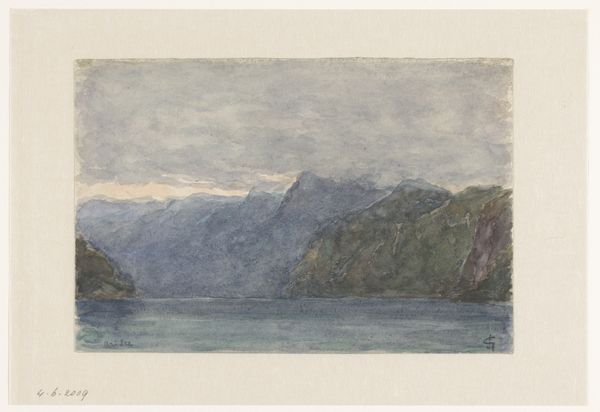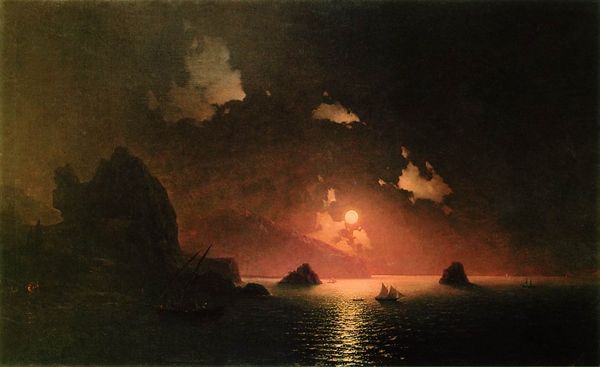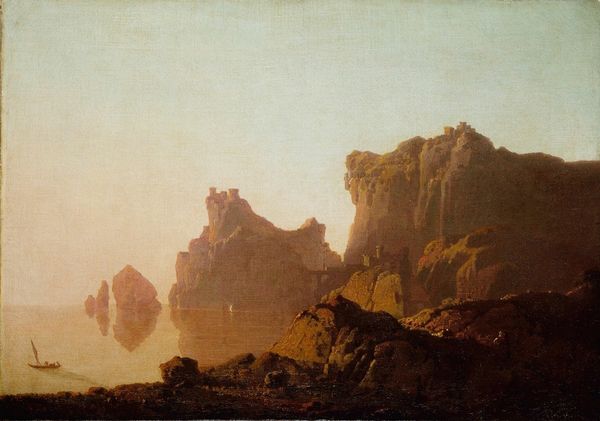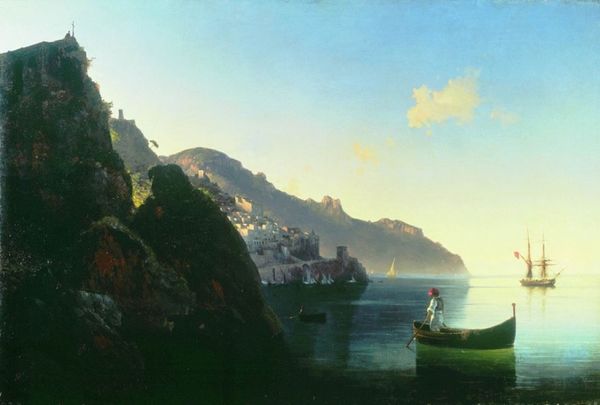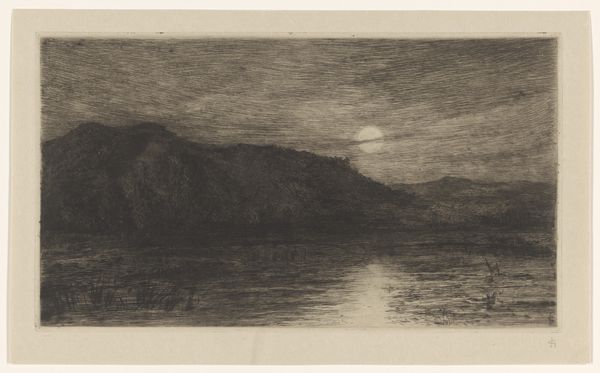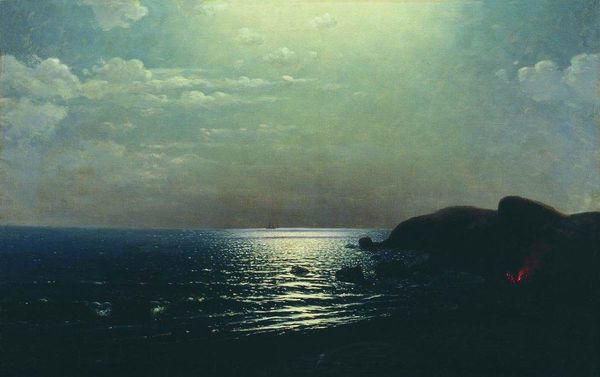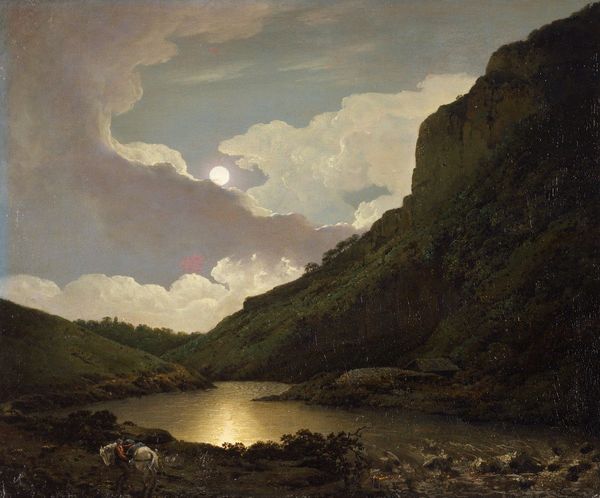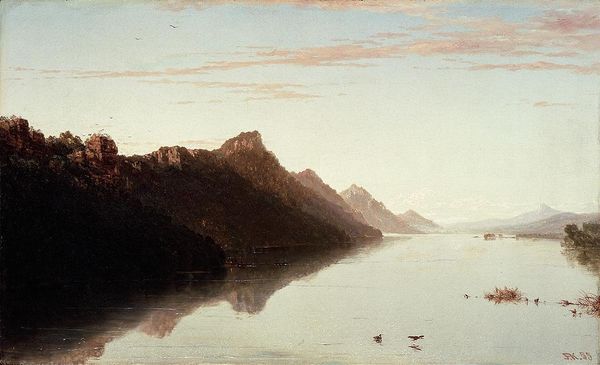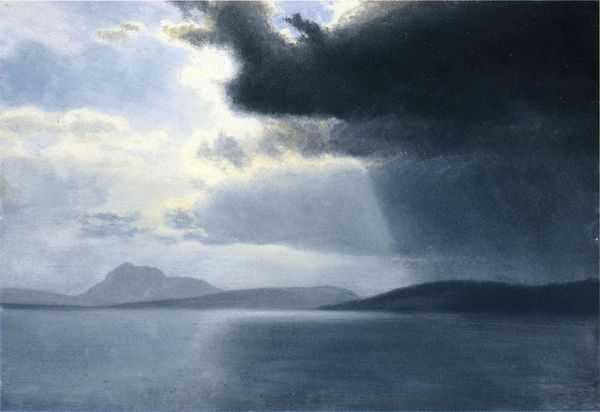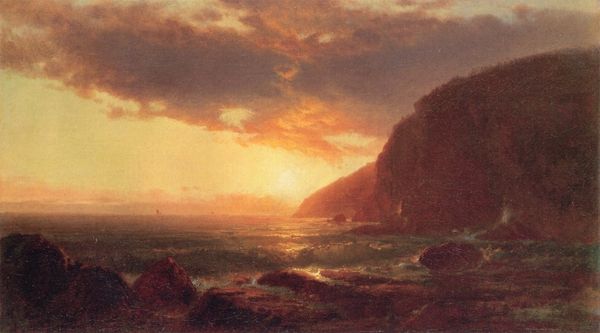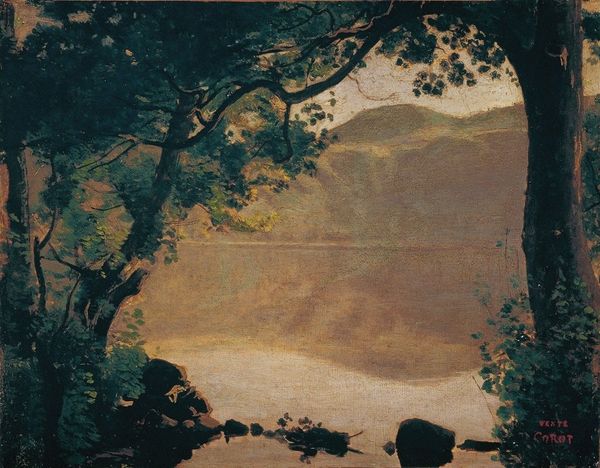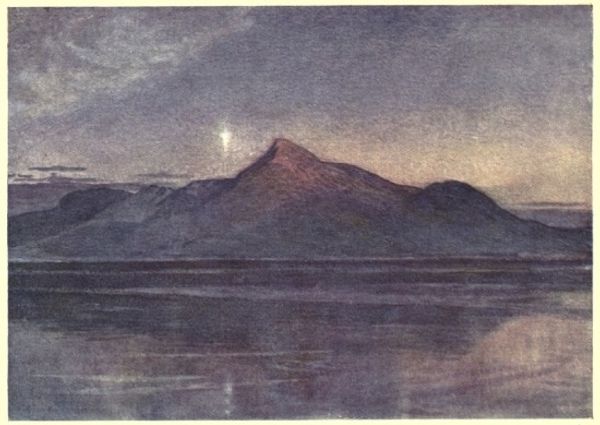
Dimensions: support: 160 x 187 mm
Copyright: CC-BY-NC-ND 4.0 DEED, Photo: Tate
Curator: Looking at "Rocky Bay Scene," part of the Tate Collection, created by Alexander Cozens, who lived from 1717 to 1786, I find myself drawn to its dramatic composition. Editor: My initial reaction is one of starkness, almost brooding. The dark, silhouetted rocks against the pale sky create a sense of isolation and the sublime. Curator: That sublime feeling likely ties into the cultural appetite of the time. The late 18th century witnessed a fascination with romantic landscapes, emphasizing nature's power over human structures. We see this rendered here. Editor: The tower almost seems to merge with the natural rock formation, suggesting nature's reclamation, or even a co-existence, which challenges prevailing notions of dominance. Perhaps the image is suggesting something beyond the politics of landscape. Curator: Perhaps. I find the lack of precise dating intriguing, prompting me to consider how cultural shifts influence the perception and categorization of art history itself. Editor: Precisely. The unresolved mystery amplifies its symbolic weight. For me, the ambiguity underscores our own temporal subjectivity when observing the past.
Comments
Join the conversation
Join millions of artists and users on Artera today and experience the ultimate creative platform.
tate 7 months ago
⋮
Cozens would have learned to use oils in Rome in the 1740s when he worked in the studio of the French landscape painter Claude-Joseph Vernet (1714-1789). He was especially interested in the technical aspects of oil painting, being familiar with various recipes for varnishes, as well as one for a light painting-oil containing finely powdered glass to secure quick drying. This is one of twelve oils by him which are known of today. They are mostly small landscape subjects, like this one, which seem to relate to the various treatises he was working on during his career. Alternatively, some of them may have been painted on commission for private clients. Gallery label, September 2004
